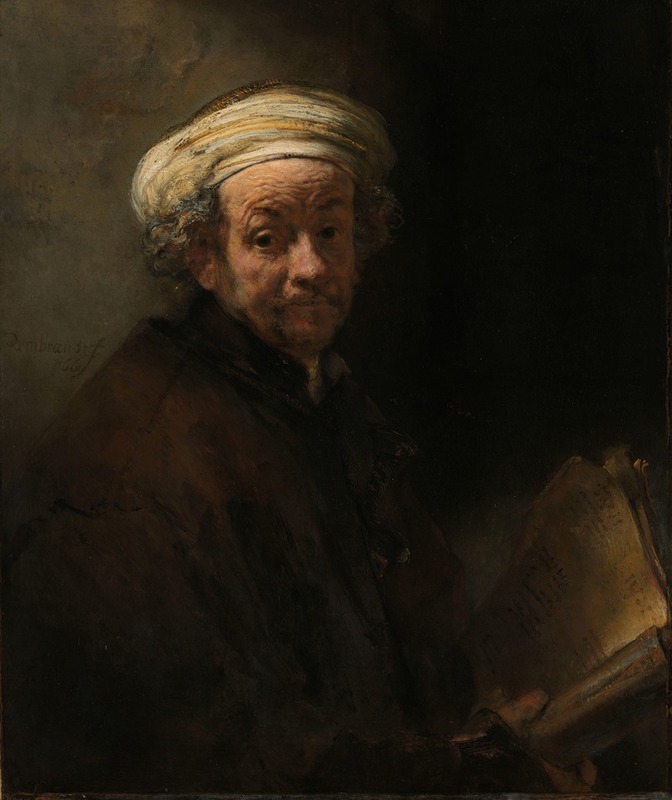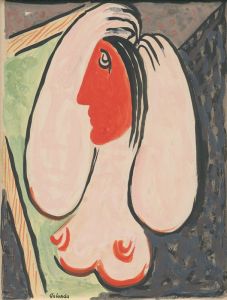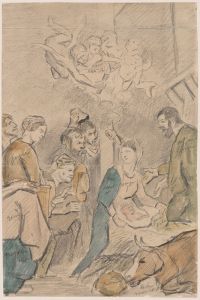
Self-portrait as the Apostle Paul
A hand-painted replica of Rembrandt van Rijn’s masterpiece Self-portrait as the Apostle Paul, meticulously crafted by professional artists to capture the true essence of the original. Each piece is created with museum-quality canvas and rare mineral pigments, carefully painted by experienced artists with delicate brushstrokes and rich, layered colors to perfectly recreate the texture of the original artwork. Unlike machine-printed reproductions, this hand-painted version brings the painting to life, infused with the artist’s emotions and skill in every stroke. Whether for personal collection or home decoration, it instantly elevates the artistic atmosphere of any space.
"Self-portrait as the Apostle Paul" is an oil painting created by the renowned Dutch artist Rembrandt van Rijn in 1661. This work is one of the many self-portraits Rembrandt painted throughout his career, showcasing his exceptional skill in capturing human emotion and character. The painting is housed in the Rijksmuseum in Amsterdam, Netherlands.
In this self-portrait, Rembrandt depicts himself as the Apostle Paul, one of the most influential figures in early Christianity. Paul is traditionally portrayed with a sword and a book or scroll, symbolizing his role as a writer of epistles and his martyrdom. In this painting, Rembrandt incorporates these elements subtly. He presents himself with a contemplative expression, holding a manuscript in his left hand, which suggests his identification with the scholarly and theological aspects of Paul's character.
Rembrandt's choice to portray himself as Paul may reflect his interest in the apostle's life and teachings, as well as a personal identification with themes of suffering, redemption, and faith. The painting was created during a period of financial difficulty and personal turmoil for Rembrandt, which might have influenced his introspective and somber depiction.
The composition of the painting is notable for its use of chiaroscuro, a technique Rembrandt mastered, which involves the dramatic use of light and shadow to create depth and volume. The light in the painting falls on Rembrandt's face and the manuscript, drawing the viewer's attention to his expression and the symbolic elements he holds. The background is dark and undefined, further emphasizing the figure and enhancing the emotional intensity of the portrait.
Rembrandt's self-portraits are celebrated for their honesty and psychological depth, and "Self-portrait as the Apostle Paul" is no exception. The painting reveals not only Rembrandt's technical prowess but also his ability to convey complex human emotions and introspection. This work is part of a larger tradition of artists depicting themselves in the guise of historical or biblical figures, a practice that allowed them to explore different facets of their identity and artistic persona.
Throughout his career, Rembrandt created nearly 100 self-portraits, including paintings, drawings, and etchings. These works provide a comprehensive visual autobiography, documenting his development as an artist and his personal experiences. "Self-portrait as the Apostle Paul" stands out among these for its unique blend of personal and religious symbolism.
The painting remains an important piece within Rembrandt's oeuvre and continues to be studied and admired for its artistic and historical significance. It exemplifies the depth of Rembrandt's engagement with his subjects and his ability to infuse his work with profound emotional and intellectual resonance.


















